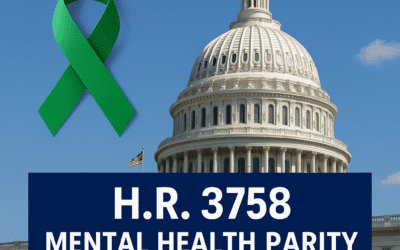Statutes of limitation can be very confusing in Employee Retirement Income Security Act cases. Since the provision of ERISA that authorizes claimants to sue to recover benefits (29 U.S.C. Section 1132(a)(1)(B)) lacks its own statute of limitations, courts borrow the most analogous limitations period under state law.
But if the benefit plan contains its own shorter limitations period, would that provision be enforceable? The recent U.S. Supreme Court ruling in Heimeshoff v.Hartford Life & Acc.Insur.Co., 2013 U.S.LEXIS 9026 (Dec. 16, 2013), answers that question in the affirmative.
In 2005, Julie Heimeshoff, an employee of Wal-Mart, became disabled due to lupus and fibromyalgia. Wal-Mart’s group disability insurer, Hartford, denied her benefit claim, although it appears the claim was temporarily approved and then denied again in November 2006.
Heimeshoff appealed the denial; however, her appeal was rejected on Nov. 26, 2007. Heimeshoff then filed suit on Nov. 18, 2010, but the complaint was dismissed based on a contractual limitations period stating, “Legal action cannot be taken against The Hartford … [more than] three years after the time written proof of loss is required to be furnished according to the terms of the policy.” The 2nd U.S. Circuit Court of Appeals affirmed. The Supreme Court resolved a split among the circuits on the enforceability of the contractual limitation period and found the suit untimely.
The court acknowledged that the ERISA provision authorizing claimants to bring a civil action to recover benefits lacks a statute of limitations. However, the insurance contract specified a three-year period to bring suit, and the three years commenced running when proof of loss is due, rendering Heimeshoff’s suit untimely.
The court pointed out that Congress generally sets the commencement of statutory limitation periods when the plaintiff is permitted to file suit. However, in other circumstances, the Supreme Court has found that statutes of limitation commence earlier. And, in this case, the court recognized that the contract commences the limitation period at a particular time; i.e., when proof of loss is due.
The Supreme Court further cited precedent upholding contractual limitation provisions. The court found that enforcing such provisions was particularly appropriate because the governing statute, 29 U.S.C. Section 1132(a)(1)(B), authorizes a plan participant to bring suit “to recover benefits due to him under the terms of his plan, to enforce his rights under the terms of the plan or to clarify his rights to future benefits under the terms of the plan.”
The court pointed out that the plaintiff had adequate time to file suit. Even though the claim appeals were protracted, the plaintiff still had one year following the final appeal determination to file suit within the contractual limitation period. While the court recognized that the running of limitation periods before mandatory review is complete, that would not be adequate grounds to reject the limitation period.
The Supreme Court conducted a historical analysis and found that cases in which claimants had less than one year to file suit after exhausting claim appeals were rare. And the only problems that have arisen have involved situations where claimants were not diligent about pursuing their rights.
The court suggested that even in situations where the statute of limitations would run during the claim appeal process, equitable doctrines would prevent the limitations period from being invoked, including the doctrine of equitable tolling (citing Irwin v. Department of Veterans Affairs, 498 U. S. 89, 95, 111 S. Ct. 453, 112 L. Ed. 2d 435 (1990), (limitation defenses “in lawsuits between private litigants are customarily subject to ‘equitable tolling'”)).
However, the Supreme Court rejected a per se rule requiring tolling of the limitation period during the claim appeal in the absence of a regulation requiring tolling.
Since ERISA borrows state statutes of limitation in the absence of its own statutory limitation period, the court also examined whether state laws required tolling during the claim process. However, the court determined that since a contractual limitation period was applicable, state statutory limitation periods did not need to be borrowed in this instance.
What is glaringly absent from the report of this decision is any explanation for the delay in filing suit, which probably explains the harsh outcome. Nonetheless, the suit would have been timely in many jurisdictions at the time it was commenced.
Thus, it appears unfair to have deprived a seemingly meritorious claimant from securing her right to disability payments based on a procedural challenge due to the misfortune of her living within the geographic boundaries of the 2nd, rather than the 9th Circuit, where her claim would have been timely.
Moreover, this ruling is difficult to reconcile with U.S. Airways, Inc. v. McCutchen, 133 S. Ct. 1537 (2013), which rejected equitable defenses that undermined plan terms. Under McCutchen, a benefit plan sponsor could draft terms that would strictly enforce the contractual limitations period and exclude equitable defenses such as equitable tolling.
Although that is unlikely, a solution to this problem ever occurring again was suggested by the opinion. The Labor secretary could and should amend the ERISA regulations to include a provision that is comparable to laws most states have adopted that toll the running of limitation periods between the submission of proof of loss under an insurance policy and the communication of the final claim determination. (See, e.g., 215 ILCS 143.1, which states, “Whenever any policy or contract for insurance, except life, accident and health, fidelity and surety and ocean marine policies, contains a provision limiting the period within which the insured may bring suit, the running of such period is tolled from the date proof of loss is filed, in whatever form is required by the policy, until the date the claim is denied in whole or in part.”)






